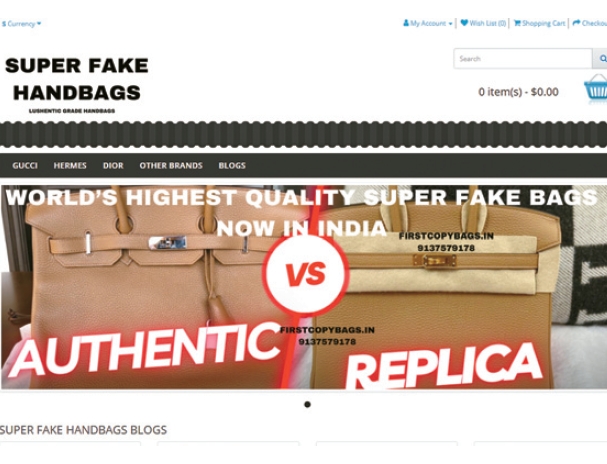A growing number of Gen Z consumers are turning to “superfakes”—highly convincing counterfeit luxury goods that closely resemble authentic products. These items, once dismissed as knockoffs, are now gaining acceptance as cost-effective alternatives to expensive designer brands.

According to a Wall Street Journal (WSJ) report on July 14, Gen Z shoppers no longer see superfakes as shameful or illegal. Instead, they view them as smart consumer choices. Skeptical of luxury pricing and aggressive branding, many young buyers prefer superfakes that offer similar quality at a fraction of the cost. This shift is changing purchasing habits and rapidly expanding the counterfeit market.
Superfakes are manufactured with such precision that even professionals struggle to tell them apart from genuine items. Sarah Davis, founder of Fashionphile, said, “Even people who work at well-known luxury brands sometimes cannot distinguish between genuine items and superfakes.” The near-identical logos, stitching, materials, and packaging have reshaped the perception of these products—from low-quality fakes to high-value alternatives.
Social media plays a major role in the spread of superfakes. Influencers on platforms like Instagram are driving sales through product demonstrations and affiliate links. One account, @davidslifestyle, features unboxing videos of superfakes and connects users to personal pages where over 150 counterfeit versions of Hermès, Dior, and Chanel items are available for purchase. Influencers typically receive a 10% commission from each sale.
To distance themselves from the stigma of counterfeiting, sellers use terms like “replicas,” “mirror bags,” “superclones,” or “1:1s.” These labels suggest high-end quality without the luxury price tag, appealing to younger buyers who value appearance and affordability over brand status.
On websites such as superfakehandbags.net, counterfeit handbags from brands like Hermès and Dior are sold for approximately $300 to $400. Another site, perfectrolex.io, lists Rolex Submariner watches—typically valued over $10,000—for just $400.
Despite their popularity, superfakes remain illegal. Under California Penal Code, selling trademark-infringing items can lead to up to one year in jail for individuals. Buyers may also face legal consequences if authorities can prove intent. Jerain Alcordo, spokesperson for U.S. Customs and Border Protection (CBP), warned that those who resell counterfeit items for profit or distribute them intentionally could face felony charges. She also noted that profits from counterfeit goods may fund other criminal activities such as terrorism or human trafficking, making even casual purchases potentially risky.
In South Korea, enforcement has intensified. In 2023, influencer Seyoon Park, CEO of Huck Closet, was arrested for selling superfakes through her blog. Authorities said she sold counterfeit products to over 1,400 customers. One such item was a replica Louis Vuitton jacket priced at ₩355,000 (about $270), copied from an original valued at ₩5,090,000 (about $3,900).
As superfakes continue to gain traction, experts emphasize the legal and ethical risks involved—even as they become symbols of affordability and fashion consciousness among Gen Z.
BY YEONGCHAE SONG [song.yeongchae@koreadaily.com]




